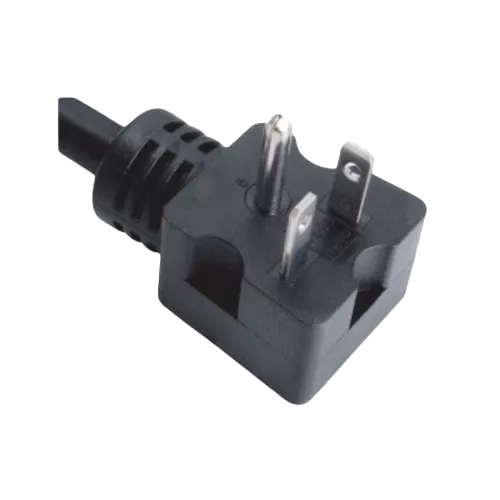To address common problems like overheating or intermittent connections with a US Standard Power Cord, you can follow these steps:
Inspect the Power Cord: A thorough visual inspection of the power cord involves examining its entire length, including the plug, cable, and connector ends. Look for any signs of wear, such as fraying, cuts, or abrasions on the outer insulation. These can expose the internal conductors, leading to short circuits or electrical shocks. Check the integrity of the plug's prongs and ensure they're not bent or damaged, which could affect proper insertion into the outlet. Inspect the connector ends for any signs of corrosion or deformation, which may impede a secure connection to the device.
Ensure Proper Ventilation: Overheating of the power cord and connected device can result from inadequate ventilation, causing components to degrade prematurely or even pose a fire hazard. Ensure there's sufficient clearance around the cord and device to allow for proper airflow. Avoid placing them in confined spaces or near heat-generating sources like radiators or electronic equipment. Consider using cable management solutions to organize and route the cord away from areas prone to heat buildup.
Check the Outlet: Overloading an outlet can lead to overheating and voltage fluctuations, jeopardizing the safety of connected devices. Verify the outlet's capacity by checking its voltage rating and the amperage of the circuit breaker or fuse protecting it. Calculate the total power consumption of all devices plugged into the outlet to ensure it doesn't exceed the rated capacity. Consider using a dedicated circuit or installing additional outlets if frequent overloading is a concern.
Replace the Power Strip or Surge Protector: Power strips and surge protectors serve as essential safeguards against electrical surges and transient voltage spikes. However, these devices can degrade over time due to wear and tear, compromising their protective capabilities. Test the functionality of the power strip or surge protector by verifying its surge suppression rating and conducting a continuity test on its internal wiring. Consider upgrading to models equipped with advanced features like EMI/RFI filtering and thermal overload protection for enhanced reliability.
Check for Loose Connections: Loose connections can lead to increased electrical resistance and arcing, resulting in overheating and potential fire hazards. Ensure the power cord's plug makes firm contact with the outlet receptacle, providing a secure electrical connection. Inspect the connector ends for signs of corrosion or oxidation, which can impede conductivity. Consider using locking connectors or twist-lock plugs for applications prone to vibration or movement, preventing accidental disconnection.
Avoid Daisy-Chaining: Connecting multiple power cords or extension cords in a daisy-chain configuration can overload circuits and create voltage drop issues. This setup increases the risk of overheating and electrical hazards, especially in high-power applications. Instead, use a single, appropriately rated power cord that reaches the intended outlet without the need for extensions. If additional outlets are required, consider installing a power distribution unit (PDU) or using a multi-outlet surge protector to safely accommodate multiple devices.
Monitor for Overheating: Overheating is a serious issue that can compromise the safety and performance of the power cord and connected devices. Use a non-contact infrared thermometer to measure the temperature of the cord and device during operation. Monitor for any abnormal temperature rise, indicating potential issues such as excessive current draw or poor ventilation. If overheating is detected, immediately disconnect the power cord and allow it to cool down before further investigation.
JT-3H Three-core US standard plug PVC power cord

JT-3H Three-core US standard plug PVC power cord



 English
English عربى
عربى











